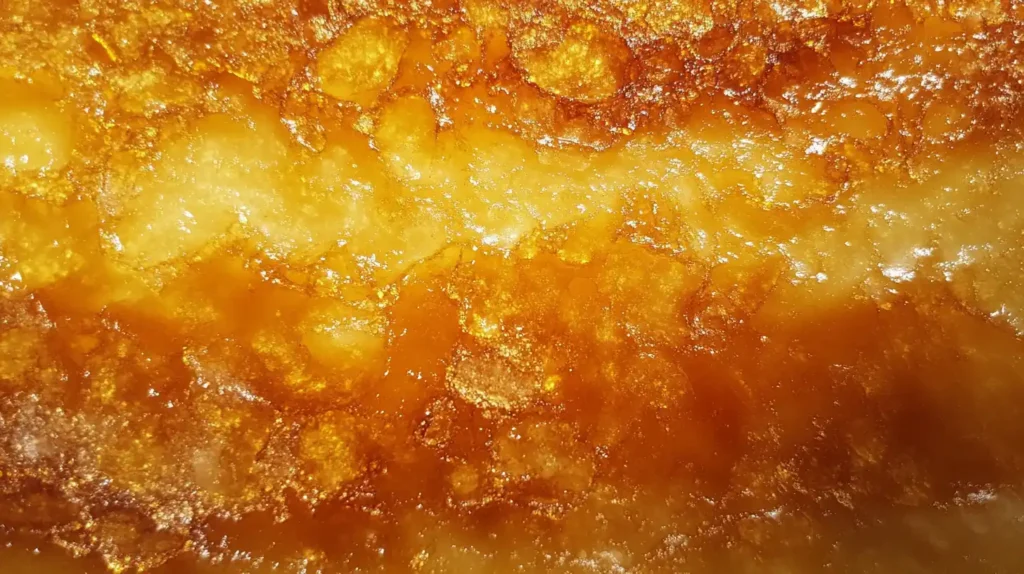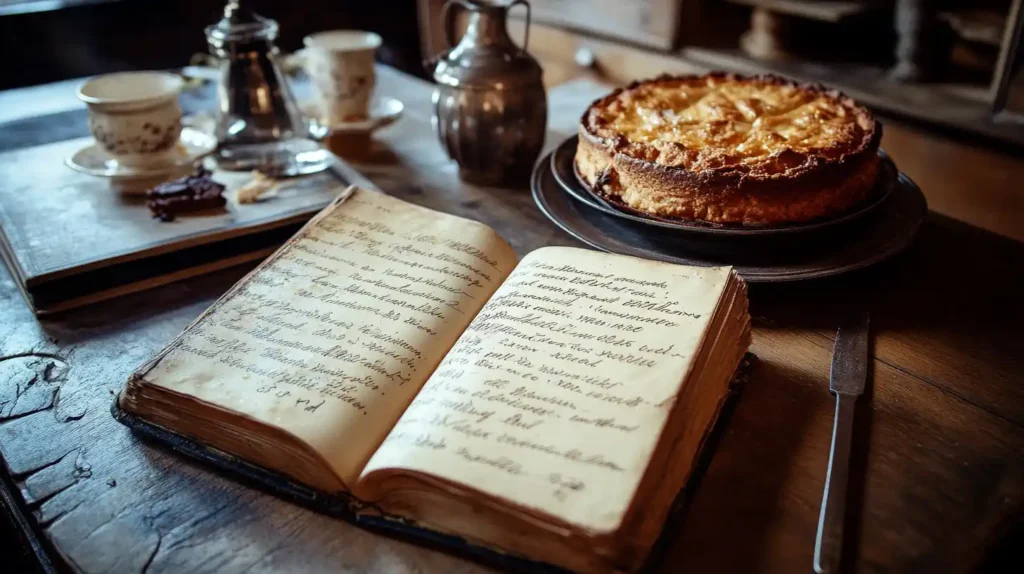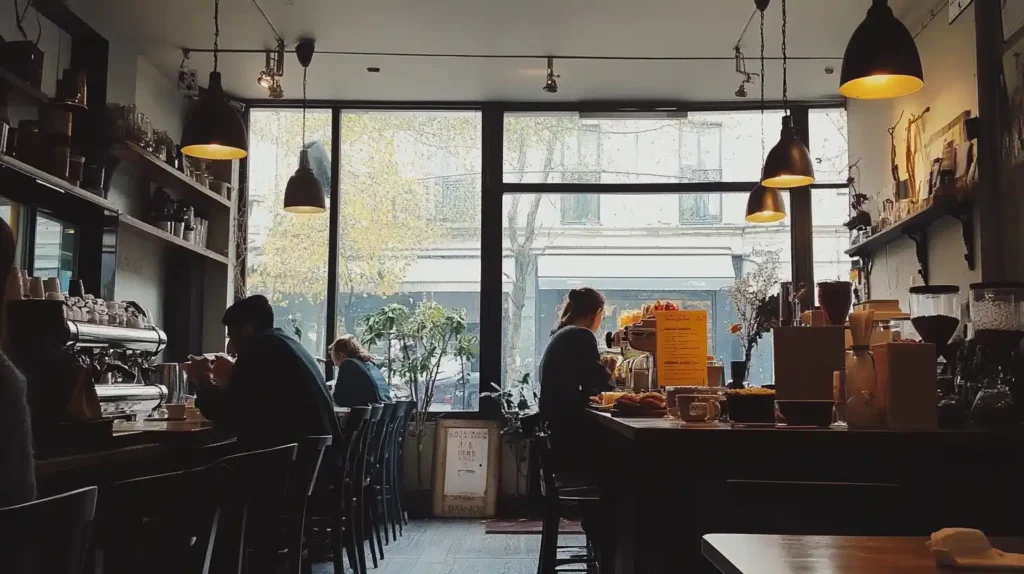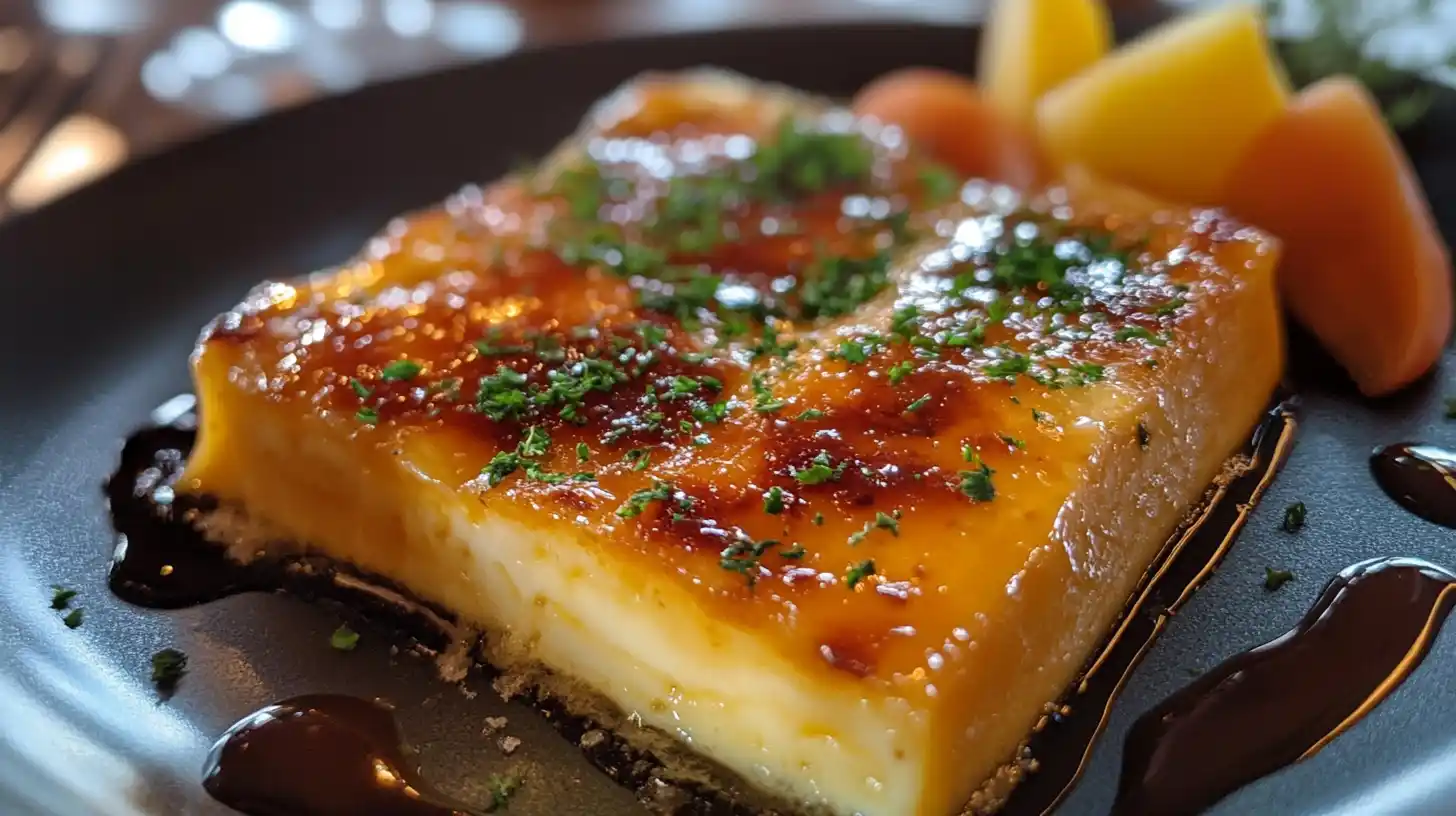When people hear the name crème brûlée, they often imagine a smooth, velvety custard topped with a crisp, caramelized sugar layer. This French dessert has remained a fine-dining favorite for decades. However, many do not know what crème brûlée literally means. In this article, we will explore its origins, history, and meaning in detail.
What is the literal meaning of crème brûlée?

The name crème brûlée comes from French, where:
- Crème means cream
- Brûlée translates to burnt
When combined, crème brûlée literally means “burnt cream.” This name comes from the dessert’s signature featureca crispy, caramelized sugar layer that forms on top of a smooth and creamy custard base.
Why Is It Called “Burnt Cream”?
What does crème brûlée literally mean? The name translates to “burnt cream” in French, referring to the dessert’s signature caramelized sugar topping. However, the “burnt” part of the name refers to the cooking process, not the flavor.
After the custard is prepared and cooled, a thin layer of sugar is sprinkled on top. Then, the sugar is heated until it melts and turns golden brown. This creates a thin, crunchy crust that contrasts beautifully with the soft, creamy custard beneath it, making crème brûlée a dessert loved for both its texture and flavor.
This caramelization process gives crème brûlée its rich, deep flavor. The slightly bitter caramel balances the sweetness of the custard, making it a perfectly balanced dessert.
Is “Crème Brûlée” the Only Name for This Dessert?
Over time, crème brûlée has had different names in different countries. Here are some variations:
- Cambridge Burnt Cream – A similar dish served at Trinity College, Cambridge in England.
- Trinity Cream – Another name used in British cookbooks.
- Crema Catalana – A Spanish version made with milk instead of cream and flavored with citrus zest and cinnamon.
Although these desserts share similar features, the French version remains the most famous.
The Origins and Evolution of Crème Brûlée
The history of crème brûlée is both fascinating and debated. While many believe it is a French invention, similar desserts existed in Spain and England long before the French name became popular. Let’s take a closer look at how this famous dessert evolved over time.

Early Beginnings: A Shared Culinary Heritage
Although people now recognize crème brûlée as a French classic, custard-based desserts with caramelized sugar date back centuries.
- Crema Catalana (Spain, 14th century) – This Spanish dessert closely resembles crème brûlée but uses milk instead of cream and features citrus zest and cinnamon for flavor. Unlike crème brûlée, chefs traditionally thicken it with cornstarch instead of eggs.
- Trinity Cream (England, 17th century) – In 1879, Cambridge burnt cream became popular at Trinity College, Cambridge. The sugar topping was caramelized using a branding iron imprinted with the college’s crest.
- French Custard Dishes (17th century) – French cookbooks from the 1600s describe custards similar to crème brûlée, though people did not use that exact name until later.
However, despite its early mention, the dessert disappeared from French cookbooks for nearly 200 years before making a huge comeback in the 1980s.
Would you like to explore other desserts with similar textures? You may find this guide helpful!
François Massialot and the First French Recipe (1691)
The phrase “crème brûlée” literally means “burnt cream” in French. The name refers to the caramelized sugar layer on top of the rich custard dessert.
The first known French recipe for crème brûlée appeared in a 1691 cookbook by François Massialot, a chef who cooked for the French royal court. In his book Cuisinier Royal et Bourgeois, he described a rich custard made from egg yolks and cream, which was sprinkled with sugar and then caramelized with a hot iron.
However, despite this early mention, crème brûlée disappeared from French cookbooks for almost 200 years! It was only in the 1980s that it became widely recognized as a staple of French fine dining.
The Rise of Crème Brûlée in Modern Cuisine
Although crème brûlée had existed for centuries, it became a true restaurant favorite in the 1980s. Many credit this to Sirio Maccioni, a New York restaurateur, who popularized the dessert at his famous restaurant, Le Cirque. His version of crème brûlée became a symbol of luxury and elegance, and soon, it appeared on menus across the world.
Today, crème brûlée remains one of the most beloved and recognizable desserts. Michelin-star restaurants, cafés, and home cooks serve it worldwide.
How to Make Crème Brûlée: The Classic Ingredients
Crème brûlée may look fancy, but it requires only a few simple ingredients. The magic lies in the technique rather than the complexity of the recipe. Let’s explore what makes this dessert so special.
The Essential Ingredients
A classic crème brûlée consists of four basic ingredients:
- Heavy cream – This gives the custard its rich, silky texture.
- Egg yolks – They provide structure and create the smooth, creamy consistency.
- Sugar – Used both in the custard and for the caramelized topping.
- Vanilla – The most traditional flavor, though some variations include citrus zest, coffee, or chocolate.
Step-by-Step Guide to Making Crème Brûlée
- Heat the cream – Warm the heavy cream gently, often with vanilla beans or extract, to infuse flavor.
- Whisk egg yolks and sugar – Beat them together until the mixture becomes pale and slightly thick.
- Combine and temper – Slowly pour the warm cream into the egg mixture while stirring continuously. This step prevents the eggs from scrambling.
- Strain the mixture – Pour it through a fine mesh sieve to remove any lumps, ensuring a smooth custard.
- Bake in a water bath – Pour the mixture into ramekins and place them in a baking dish filled with hot water. This prevents the custard from curdling or cracking.
- Chill the custard – Once baked, the custards must cool and set in the refrigerator for at least four hours (or overnight for the best texture).
- Caramelize the sugar – Before serving, a thin layer of sugar is sprinkled on top and caramelized using a kitchen torch or broiler. This creates the signature crisp, golden crust.
Why Is a Water Bath Necessary?
A bain-marie (water bath) is crucial when baking crème brûlée. This method ensures even heat distribution, allowing the custard to cook gently. Without it, the eggs could overcook, resulting in a grainy texture instead of a smooth, creamy custard.
How to Caramelize the Sugar Topping
One of the most exciting parts of crème brûlée is breaking through the crispy, caramelized sugar topping with a spoon. This golden-brown crust not only adds a delicious contrast to the creamy custard but also gives the dessert its name—crème brûlée literally means “burnt cream” in French.
Let’s explore how to create this caramelized layer and why it is essential to the dish. The chef evenly sprinkles sugar over the custard and then heats it with a kitchen torch or broiler until it melts and forms a hard, glassy surface. This signature topping enhances both the texture and flavor, making crème brûlée a timeless favorite.
How Does the Sugar Become Caramelized?
What does crème brûlée literally mean? The phrase translates to “burnt cream” in French, referring to the dessert’s signature caramelized sugar topping.
The chef creates the caramelized topping by melting sugar on the surface of the chilled custard. When heated, the sugar undergoes a process called caramelization, where it melts and changes color, developing a rich, deep flavor. The result is a thin, crisp layer that cracks when tapped with a spoon. This contrast between the smooth custard and crispy sugar layer is what makes crème brûlée so special.
Want to experiment with other baking techniques? You might enjoy learning how to bake perfect cinnabuns with soft, gooey layers.
Methods for Caramelizing Sugar
There are three common ways to create the perfect caramelized topping for crème brûlée:
- Using a Kitchen Torch (Most Popular Method)
- Sprinkle a thin layer of granulated sugar evenly over the chilled custard.
- Hold a butane kitchen torch a few inches above the surface and move it in circles.
- The sugar will slowly melt, bubble, and turn golden brown.
- Allow it to set for about one minute before serving.
- Using an Oven Broiler
- If you don’t have a torch, you can use the broiler setting on an oven.
- Preheat the broiler and place the ramekins under it for 1–2 minutes.
- Watch closely, as sugar can burn quickly.
- Remove the custards once the sugar turns golden brown and let them cool slightly.
- Using a Hot Iron (Traditional Method)
- Some chefs use a red-hot iron disk (called a salamander) to caramelize the sugar.
- The hot metal is pressed onto the sugar until it melts and forms a crust.
- This method was commonly used in historical French kitchens before torches became popular.
Tips for Getting the Perfect Caramelized Crust
- Use fine sugar – It melts faster and more evenly.
- Avoid thick sugar layers – Too much sugar will result in a burnt, bitter taste.
- Let it cool slightly before serving – This helps the crust harden properly.
The caramelized topping is what makes crème brûlée so special. The contrast between the cold, creamy custard and the warm, crispy sugar crust creates a delightful texture that keeps people coming back for more.
Why Is Crème Brûlée So Popular?
What does crème brûlée literally mean? The phrase crème brûlée comes from French and literally means “burnt cream.” This name refers to the dessert’s signature caramelized sugar topping, which is created by sprinkling sugar over a rich custard and then heating it until it forms a crisp, golden-brown crust.

1. The Perfect Balance of Textures
One of the main reasons crème brûlée is so beloved is its contrast of textures. Each bite offers:
- A hard, caramelized sugar crust that cracks when tapped.
- A soft, creamy custard underneath that melts in the mouth.
This combination of crisp and smooth creates a unique sensory experience, making the dessert even more enjoyable.
2. Simple Ingredients, Luxurious Taste
Despite its elegant presentation, crème brûlée is made with just four basic ingredients—cream, eggs, sugar, and vanilla. But what does crème brûlée literally mean? The name translates to “burnt cream” in French, referring to its signature caramelized sugar topping.
When combined, these simple ingredients create a rich, silky custard with deep, complex flavors. The caramelized sugar on top adds a slight bitterness, perfectly balancing the sweetness of the custard. This contrast of textures and flavors is what makes crème brûlée a timeless and beloved dessert.
3. A Show-Stopping Presentation
Beyond its taste, crème brûlée is visually stunning. The contrast between the golden caramel topping and the pale, creamy custard makes it instantly recognizable. The final step—caramelizing the sugar—adds a bit of drama, especially when done tableside with a torch.
4. A Timeless Dessert with a Rich History
Crème brûlée is not just delicious; it is also a dessert with a long and fascinating history. Dating back over 300 years, it has been enjoyed by French royalty, British scholars, and modern food lovers alike. Knowing that it has been a favorite for so many generations makes it even more special.
5. Easy to Customize and Experiment With
While the classic vanilla version remains the most popular, chefs around the world have created countless flavor variations to suit different tastes. Some modern twists include:
- Chocolate crème brûlée – Made with melted dark chocolate.
- Coffee crème brûlée – Infused with espresso for a bold flavor.
- Matcha crème brûlée – A Japanese-inspired version with green tea.
- Citrus crème brûlée – Zested with orange or lemon for a refreshing twist.
This flexibility allows chefs and home bakers to experiment and get creative, keeping the dessert fresh and exciting.
6. Widely Available Yet Still Special
Unlike some gourmet desserts that are difficult to find, crème brûlée is featured on menus worldwide. From fine-dining restaurants to cozy cafés, this classic treat remains a popular choice. The combination of its rich, creamy custard and crisp, caramelized sugar topping makes it both simple and luxurious.
At the same time, crème brûlée still feels sophisticated and indulgent, making it perfect for special occasions. Whether enjoyed in an elegant restaurant or made at home, this timeless dessert continues to captivate with its delicate balance of textures and flavors.
7. A Fun and Rewarding Dessert to Make at Home
Many people love making crème brûlée because it feels like a restaurant-quality dessert but is surprisingly simple. The process of caramelizing sugar with a torch is especially fun, and the satisfaction of cracking through the crust is part of the experience.
With its luxurious taste, simple ingredients, and rich history, it’s easy to see why crème brûlée has remained one of the world’s most beloved desserts.
FAQs: Common Questions About Crème Brûlée
Many people love crème brûlée, but they often have questions about its history, preparation, and unique features. Below are some of the most common questions and answers about this famous dessert.
1. Is Crème Brûlée Really a French Dessert?
Yes, but its origins are debated. While crème brûlée became famous in France, similar desserts appeared in Spain (crema catalana) and England (Trinity cream) centuries ago. The first known French recipe appeared in 1691 in François Massialot’s cookbook. However, the dish disappeared from French cookbooks for nearly 200 years before becoming a fine-dining favorite in the 1980s.
2. Can Crème Brûlée Be Made Without a Torch?
Yes! While a butane kitchen torch is the easiest way to caramelize the sugar, there are alternative methods:
- Broiler Method: Place the ramekins under a hot oven broiler for 1–2 minutes until the sugar caramelizes.
- Hot Spoon Method: Heat a metal spoon over an open flame, then press it onto the sugar to melt it.
- Caramel Disks: Some chefs create pre-made caramelized sugar disks and place them on top just before serving.
Although a torch provides more control, these methods can also produce a crispy, golden crust.
3. What’s the Difference Between Crème Brûlée and Crème Caramel?
Many people confuse these two desserts, but they have key differences:
| Feature | Crème Brûlée | Crème Caramel (Flan) |
|---|---|---|
| Topping | Hard caramelized sugar crust | Soft caramel sauce |
| Texture | Thick, creamy custard | Lighter, more delicate custard |
| Cooking Method | Baked in a water bath, then sugar is caramelized before serving | Baked with caramel sauce at the bottom of the mold |
Both desserts are delicious, but crème brûlée stands out for its signature crunchy topping, while crème caramel comes with a liquid caramel sauce.
4. Should You Serve Crème Brûlée Warm or Cold?
People traditionally serve it chilled. However, the caramelization process slightly warms the sugar layer, creating a pleasant contrast between the cool custard and the warm, crispy sugar topping. Some people enjoy it at room temperature, but chefs rarely serve it hot.
5. Why Does Crème Brûlée Need a Water Bath?
A water bath (bain-marie) ensures that the custard cooks evenly. Without it, the eggs could curdle, creating a grainy texture. The gentle heat of the water prevents the custard from cooking too quickly, resulting in a smooth and creamy consistency.
6. Can You Make Dairy-Free Crème Brûlée?
Yes! While traditional crème brûlée uses heavy cream, you can find dairy-free alternatives:
- Coconut milk or cream – Provides a rich, slightly tropical flavor.
- Almond milk – Lighter, but needs thickening agents.
- Cashew cream – Adds a creamy, nutty taste.
To thicken dairy-free versions, some recipes include cornstarch or agar-agar. While the texture may differ slightly, these alternatives still produce a delicious dessert.
7. How Long Does Crème Brûlée Last?
- In the fridge: The custard (before caramelizing the sugar) lasts 3–4 days when covered with plastic wrap.
- After caramelizing: Eat it within a few hours to maintain the crispy texture.
8. Can You Freeze Crème Brûlée?
Yes, but it requires special handling:
- Freeze the custard before adding the sugar topping.
- Thaw overnight in the fridge.
- Sprinkle sugar and caramelize just before serving.
Freezing changes the texture slightly, but it is still a great way to prepare it in advance.
9. Why Does My Crème Brûlée Taste Eggy?
A strong egg flavor usually happens when:
- The custard overcooked.
- The cook did not properly temper the eggs when adding warm cream.
- The recipe uses too many eggs.
To fix this, use low heat, a water bath, and the right egg-to-cream ratio for a smooth, mild flavor.
10. What Sugar Is Best for the Caramelized Topping?
- Granulated sugar – The most common and easiest to caramelize.
- Turbinado sugar (raw sugar) – Adds a richer caramel flavor but takes longer to melt.
- Brown sugar – Can burn quickly, so it requires careful torching.
A fine layer of white sugar works best for a smooth, even caramelized crust.
These are some of the most common questions about crème brûlée. Hopefully, they help you understand this classic dessert even better!
Final Thoughts: A Dessert That Has Stood the Test of Time
Few desserts have achieved the lasting appeal of crème brûlée, but what does crème brûlée literally mean? The name translates to “burnt cream” in French, highlighting the dessert’s signature caramelized sugar topping.
With its rich history, simple ingredients, and luxurious texture, crème brûlée continues to be a favorite in fine dining and home kitchens alike. From its humble beginnings in 17th-century cookbooks to its modern-day popularity, this classic French dessert has proven that great food never goes out of style.
Why People Love Crème Brûlée
- A Perfect Contrast of Textures – The crispy caramelized topping complements the smooth, creamy custard underneath.
- Simple Yet Elegant – With just four ingredients, it transforms into a sophisticated, restaurant-quality dessert.
- Fun to Make and Eat – The cracking sound of the caramelized sugar adds a playful element to every bite.
- Versatile and Customizable – From classic vanilla to chocolate, citrus, and coffee variations, chefs can adapt it to suit different tastes.
Will Crème Brûlée Continue to Be Popular?
Absolutely! Its timeless appeal, combined with its simplicity and elegance, ensures that it will remain a favorite for generations to come. Whether enjoyed in a Michelin-star restaurant or prepared at home for a special occasion, crème brûlée never fails to impress.
Try Making It Yourself!
If you’ve never made crème brûlée before, why not give it a try? With the right techniques and a bit of patience, you can create a delicious, creamy dessert that looks and tastes like it came straight from a professional kitchen.
What do you love most about crème brûlée? Have you tried making it at home? Share your thoughts in the comments!

